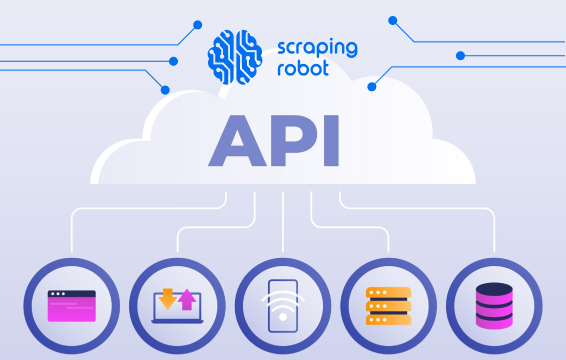How To Use A Rest API To Access Big Data From Around The Web

Table of Contents
In delving into the world of APIs to take advantage of these wonderful pieces of software for their many uses, you might have come across the term “REST API” several times and wondered exactly what a RESTful API is. Just like we have architectural styles for buildings, so also do we have architectural styles for building APIs and one of those styles is the REST architecture.
Seeing as APIs are a set of instructions and protocols that set a standardized format for communication between software systems, it stands to reason that there should be standardized methods of building APIs to make them easy to understand and implement by all end-users of the API. The REST architecture is one of these standardized methods of building APIs and it is also one of the most popular. It follows a number of principles that make for easy documentation and allow developers to easily integrate the API into the endpoints of their own applications.
In this article, we’ll look at the structure of a REST API, what makes an API RESTful, the principles that guide the development of a REST API, and the value of an effective API architecture to the data ecosystem.
What Is a Rest API?

First presented by Roy Fielding in his dissertation in the year 2000, REST is an acronym for REpresentational State Transfer. It is a standard architectural style of designing network-based software systems that provide a channel of communication between systems on the internet. A REST API is therefore an application programming interface that is designed and backed with the REST architectural style, using its principles and methods as the base for the APIs operations.
Contrary to the popular thought that tends to equate REST to HTTP, the REST architecture can actually be executed on any protocol including JSON, XML, and so on. The major advantage offered by this architectural style that makes it a favorite for building APIs is flexibility. The REST style is not constrained to operating 0n a single protocol and the data is not constrained to methods or resources. Therefore, an end-user can make multiple calls to the API, get various data formats in return and even the structure of the API can be easily modified with the implementation of the right hypermedia.
To fully define an API as being RESTful, there are some principles that have to be observed in building the API. Let’s take a look at these principles.
Principles of a Restful API

The REST architectural style of building web interfaces has six guiding principles. Any interface that adheres to these principles can be said to be RESTful. Here they are:
- Client-server: REST is a client-server architecture. This means that the client, the frontend, is separated from the server, the backend, each of them carrying its own concerns and structures. The server provides the resources in raw data form while the client translates and presents it in an interactive and easy-to-read format on the front end. This separation of duties allows the server and client to evolve independently and makes the development of portable user interfaces possible. The user interface can be scaled across multiple platforms without affecting the backend.
- Stateless: The REST architecture is stateless. This means that the client cannot rely on any information stored on the server and for every request, the client must identify itself, authorize and then clearly define its request. Each request from the client must contain all the information necessary for the server to fulfill the request. For example, in real life, if you were to ask the questions, “Who is Mike Tyson?” and “where does he live?” in order, you would assume that the person remembers the name you just mentioned and therefore ascribes the second question to that same name. However, if machines in a RESTful architecture carried out the same question and answer session, it would go more like, “who is Mike Tyson?” and “where does Mike Tyson live?” because the server (answering the question) is not expected to keep storage of previous requests and therefore, the client (asking the question) must provide the full details for each request.
- Uniform interface: The REST architecture provides a uniform interface and standardized access methods between all the components of the system. A client needs to know that it can hit up the same URL to call for a particular resource and get the same response every time. The URL should also contain all the relevant links that provide related data to the client. The REST architecture is defined by four major constraints that set the tone for uniformity: identification of resources; self-descriptive messages; manipulation of resources through representations and hypermedia links as an engine of state transformation.
- Layered system: The architecture offers a layered system of support that ensures that each component of the interface is constrained to only “seeing” the immediate layer with which they are interacting. This allows components of the system to be self-contained and reduces dependency in the system. A faulty component can be replaced without overhauling the system.
- Cacheable: As we said earlier, a REST architecture is stateless. However, the statelessness comes with a lot of chatter back and forth between the client and the server because the client has to repeat every request. This can lead to an overload of requests on the server. This is why there is a need for caching. Caching stores temporary versions of requests at a point between the server and the client and sometimes on the client itself. When the client makes a request for a resource that has been cached, it is fetched from the storage point (as long as it is not yet stale) and returned to the client. This means there is no need for a roundtrip to the server and the request does not need to reach the server, thereby reducing the number of requests on the server. Cached data is available even when the server is down (since it is not on the server) and gets back to the client faster since the request has a shorter way to go. These two benefits- speed and availability- are also part of why caching is very important.
- Code-on-demand: This is an optional principle that provides a snippet of code to the client to tell it what to do with the data. This reduces the complexity of the client as some functions no longer have to be pre-implemented. They can just be executed when the server sends the code snippet. This principle is optional because the client might not be able to read the code, and therefore cannot execute it.
These are the six principles that define the REST architecture and by building an API along these guidelines, you will have built a RESTful API.
The Value of a Rest API Architecture to the Data Ecosystem

The REST API architecture is the most widely used among developers, with good reason. Though it has a few drawbacks, the architectural style offers a lot in simplicity and straightforwardness that greatly simplifies the consumption and integration of APIs. And APIs built using this style offer a lot of functionality and value in a data-driven business ecosystem. Here are some of the benefits of a proper API architecture to your data systems.
- Easier API integration: A proper API architecture makes it easier for your APIs to be consumed both by your own developers and by external developers.
- Standardized data transfer: With properly defined resources as outlined in the principles of the REST architecture, data request, and transfer become a lot simpler as you know what to expect with each request. It also makes it easier to identify the source of errors and fix them.
- A layer of abstraction: Just as the components within a REST API are layered to reduce dependency, so also does the API serve as a layer of abstraction between the client and the server, reducing each one to only interfacing with it without knowing the state of the other. This helps to decouple the functions of the server and the client, making it possible to develop them in parallel.
- Easier access to data: With the standardized format of requests that an API in a REST architecture sends out, collecting data is simply a matter of identifying the right resource, making sure it is available on the server, and making an API call for it. The protocols defining the functions of the API based on the REST architecture will make sure that the request is defined in a manner that the server understands.
Defining Rest API Data With Scraping Robot

With an API built using the principles of the REST architecture, data access becomes easier and more straightforward. But what about when you need access to data from systems that you are not connected to? That is why Scarping Robot has created an API that can interface with your REST API and funnel data directly from our web scraping service to it. Our web scraping software is top-of-the-line, allowing you to extract data from absolutely any website on the internet. When combined with our API, it sets up a data funnel that can interface with your API and feed data directly to your systems without any hitch in the flow of data.
We have several web scraping modules available and if we do not have a module for your needs, our developers are on standby to help you build a custom module. At Scraping Robot, we believe in making data as accessible as possible and that is why we have created an engine of data collection that fits into any business vehicle of your choice. Just request and resources shall be given unto you.
Final Thoughts

A REST API is one of the most common types of API you’ll ever come across which is why we decided to take time out to explore the possibilities that exist with this style of building APIs. However, no matter the architectural structure you employ in building your APIs, with proper documentation, it should be easy to implement for all users. And that is what we, at Scraping Robot, have done. We have built an API that helps you solve your data needs while simultaneously helping you practice the consumption and implementation of APIs for your business.
The information contained within this article, including information posted by official staff, guest-submitted material, message board postings, or other third-party material is presented solely for the purposes of education and furtherance of the knowledge of the reader. All trademarks used in this publication are hereby acknowledged as the property of their respective owners.
